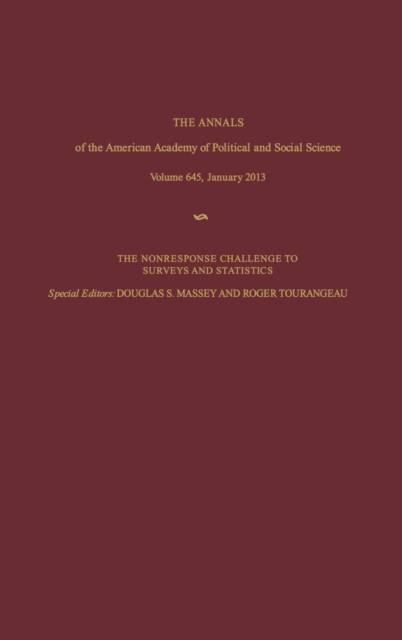
- Afhalen na 1 uur in een winkel met voorraad
- Gratis thuislevering in België vanaf € 30
- Ruim aanbod met 7 miljoen producten
- Afhalen na 1 uur in een winkel met voorraad
- Gratis thuislevering in België vanaf € 30
- Ruim aanbod met 7 miljoen producten
Zoeken
€ 238,45
+ 476 punten
Uitvoering
Omschrijving
Surveys are the principal source of data not only for social science, but for consumer research, political polling, and federal statistics. In response to social and technological trends, rates of survey nonresponse have risen markedly in recent years, prompting observers to worry about the continued validity of surveys as a tool for data gathering. Newspaper stories, magazine articles, radio programs, television broadcasts, and Internet blogs are filled with data derived from surveys of one sort or another. Reputable media outlets generally indicate whether a survey is representative, but much of the data routinely bandied about in the media and on the Internet are not based on representative samples and are of dubious use in making accurate statements about the populations they purport to represent.
Surveys are social interactions, and like all interactions between people, they are embedded within social structures and guided by shared cultural understandings. This issue of The ANNALS examines the difficulties with finding willing respondents to these surveys and how the changing structure of society, whether it be the changing family structure, mass immigration, rising inequality, or the rise of technology, has presented new issues to conducting surveys. This volume will be of interest to faculty and students who specialize in sociological movements as well as economic and immigration movements and its effect on surveying.
Surveys are social interactions, and like all interactions between people, they are embedded within social structures and guided by shared cultural understandings. This issue of The ANNALS examines the difficulties with finding willing respondents to these surveys and how the changing structure of society, whether it be the changing family structure, mass immigration, rising inequality, or the rise of technology, has presented new issues to conducting surveys. This volume will be of interest to faculty and students who specialize in sociological movements as well as economic and immigration movements and its effect on surveying.
Specificaties
Betrokkenen
- Auteur(s):
- Uitgeverij:
Inhoud
- Aantal bladzijden:
- 236
- Taal:
- Engels
- Reeks:
- Reeksnummer:
- nr. 645
Eigenschappen
- Productcode (EAN):
- 9781452282749
- Verschijningsdatum:
- 28/12/2012
- Uitvoering:
- Hardcover
- Formaat:
- Genaaid
- Afmetingen:
- 152 mm x 229 mm
- Gewicht:
- 485 g

Alleen bij Standaard Boekhandel
+ 476 punten op je klantenkaart van Standaard Boekhandel
Beoordelingen
We publiceren alleen reviews die voldoen aan de voorwaarden voor reviews. Bekijk onze voorwaarden voor reviews.








